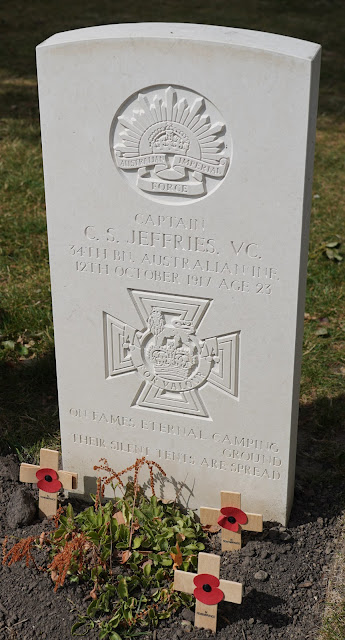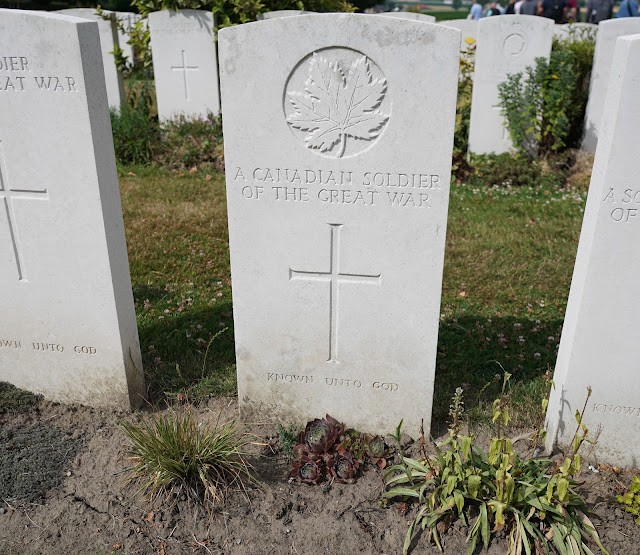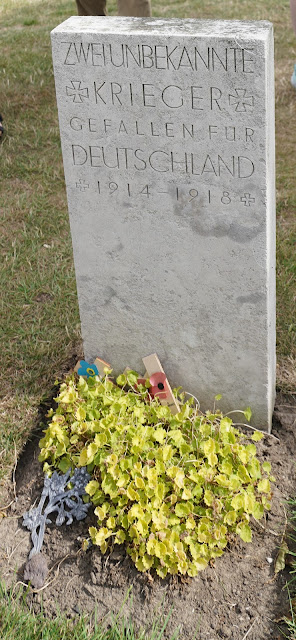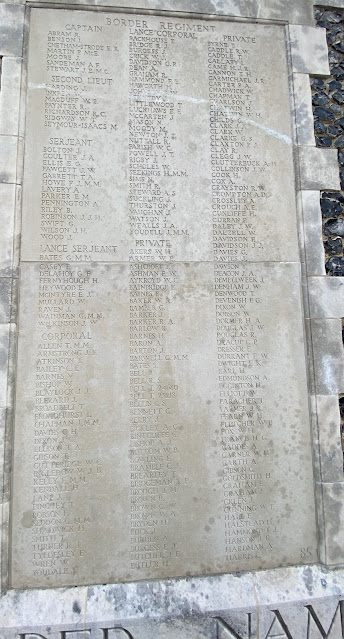Our tour guide was a retired British Commonwealth War Graves Commission member, who had worked on preserving war graves throughout the world. He had been decorated with an MBE by Queen Elizabeth II herself for his service. To say he knew his stuff and had tremendous knowledge about what we about to see was an understatement.
He gave a good overview of the history of the Ypres Salient in World War One, and of Tyne Cot Cemetary in particular.
Visiting Tyne Cot Cemetery is sobering to say the least.
Located on what was a German bunker emplacement in the First World War, 9 km northeast of Ypres, it is the largest Commonwealth War Grave cemetery in terms of number of burials. 11,961 service members who died in the Ypres Salient are buried there.
The Memorial Cross is located on top of the main German bunker.
Of the 11,961 servicemen buried there, 8,373 are unknown.
British soldiers' headstones are marked by the deceased's regimental badge:
Other nations are represented by their nation's symbol.
Many Commonwealth soldiers are buried in the cemetery, including the grave of Captain Clarence Jeffries, an Australian who posthumously earned the Victoria Cross for his valor in the Battle of Passchendaele:
When the soldier is unknown, the message on the marker will state "A (Regiment or Nation) Soldier Of The Great War, Known Unto God".
Often, not even their nationality is known:
There are so, so, many only "Known Unto God" grave markers throughout the cemetery.
If you see headstones grouped together, it means those soldiers were known to have died together and their bodies could not be separated for burial.
The cemetery changed hands throughout the war and was subject to artillery bombardment. As a result, bodies known to be buried there could not always be located and identified when the cemetery was retaken:
German soldiers, including unknown soldiers, are also buried there, and their graves are also tended to:
The Cemetery also has the memorial to those fallen soldiers of New Zealand whose grave locations are still unknown, as there was insufficient space to list these unknown soldiers on the Menin Gate Memorial:
A further memorial to British soldiers also lost and whose resting places are unknown is nearby the New Zealand Memorial, with panel after panel listing the missing by regiment.
Combined, there are almost 35,000 names of British and New Zealand soldiers on those panels upon panels on the walls, all of whose resting places are unknown.
Tyne Cot Cemetery is a place that conveys the immense horrors and tremendous loss of the First Word War.









.jpeg)







2 comments:
That it does.
Old NFO: Yep, it's one thing to read or see movies about the slaughter in the First World War, and a whole other thing to see rows on rows on rows of graves from just some of the casualties in some of the battles in just one area of the war.
Post a Comment